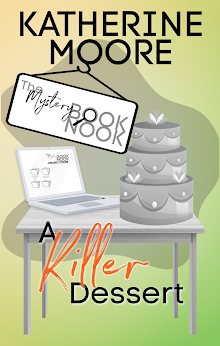Death of a
Dyer by Eleanor Kuhns is the second
of her Will Rees mysteries about a Revolutionary War veteran-turned-itinerant
weaver.
They didn't
have Facebook back in the 18th century so hearing unexpected news about an old
friend rarely meant something good had happened. For Will Rees, learning that
Nate Bowditch is dead is not only unexpected; it's unbelievable.
"Dead?”
Rees repeated, staring at George Potter in shock.
“Dead?”
A spasm of unexpected grief shot through him. Although he hadn’t seen Nate
Bowditch for eighteen years, not since Rees had marched away with the
Continental Army in
1777,
as boys they’d been closer than brothers. “Are you sure?”
Potter
put down his cup with a clink. “Of course I’m sure. His wife herself told me of
his death.”
“I’ve
never met her,” Rees said.
“After
almost twenty years? He lives— lived on the other side of Dugard, not the
Atlantic Ocean. What happened? You were such good friends.”
Rees
shrugged; that story was too long to tell. “We . . . went in different
directions.”
George goes
on to fill in the details, telling Will that his estranged friend was beaten to
death with a "scutching knife" and that there's no question that it
was murder. Worse, the main suspect in the murder is Nate's son, who was
constantly at loggerheads with his father and who has now disappeared. Will, an itinerant weaver by trade, would have
known what a "scutching knife" is--an instrument used to prep flax
for spinning--but it's not the kind of word that shows up on vocabulary tests
in the average American middle school. Kuhn's casual use of terms like that,
the kind of detail that's the product of immersive research, is just one of the
reasons why this historical mystery is so satisfying.
With a
historical mystery, as with any historical novel, it's the writer's job to
create a believable backdrop for the story to unfold, giving the tale an extra
dimension without overwhelming readers with archaic dialogue or too much
specificity which can make it look like the writer is showing off, scoring
points with his or her expertise like an over-enthusiastic member of the
Society for Creative Anachronism who is shocked, shocked to find out someone
doesn't know the difference between a knife and a dagger. You won't find that
kind of thing in an Eleanor Kuhns book.
In 2011,
she won the Minotaur Books/Mystery Writers of America's "First Crime Novel
Competition" with Will's first case, A Simple Murder, and there are enough
references to that case to fill in Will's background. As deft as those
references are, though, Kuhns is even more graceful in the way she layers in
the context for her characters' crimes.
He
examined the body once again, holding the lantern high so as to have the
maximum amount of light. When he was sure he’d seen everything, he lowered the
lantern to the dirt floor
and
pulled the canvas shroud over the bloodless face. He stood still, eyes closed
and hands folded, saying good- bye.
Will is both a man of his times and
a man who'd be recognized as a contemporary today--a single father who
sometimes eats cold chicken standing up in his kitchen, worries about his knees
freezing up if he sits too long and doesn't always know how to deal with his
rebellious son. Two hundred plus years separate our world from Will's, but as
he goes about investigating his friend's death, those years simply melt away.
The book ends with a complication that will likely carry forward into the next
Will Rees mystery, and it's something that could happen today as easily as it
happens in the book. Kuhns has brought Will's world to life so well that all we
see are the characters and the crime. The rest is icing on the cake.







No comments:
Post a Comment